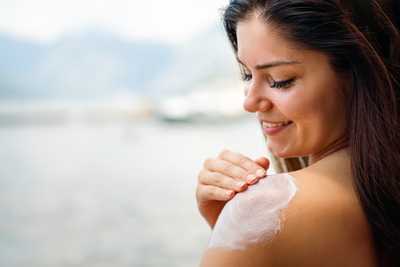Understanding the Effects of Sun Exposure on Your Face
The Impact of UVA and UVB Rays
As a resident of sunny Miami, I've always been aware of the need to protect my skin from the sun's harmful rays. But what I didn't know was the difference between UVA and UVB rays and how they affect my skin health. UVA rays are responsible for premature aging, while UVB rays can cause sunburn and even skin cancer. I learned that it's essential to shield my face from both types of rays to maintain healthy, glowing skin during the summer months.
Having oily skin, I've struggled to find a sunscreen that doesn't clog my pores or feel heavy. When I finally found a lightweight, broad-spectrum SPF that provided protection against both UVA and UVB rays, I knew I'd discovered the key to keeping my skin healthy and safe from sun damage. My board-certified dermatologist recommended using a tinted moisturizer with at least SPF 30 for everyday wear, ensuring I have enough sunscreen to shield my exposed skin from the sun's rays.
Recognizing the Signs of Sun Damage
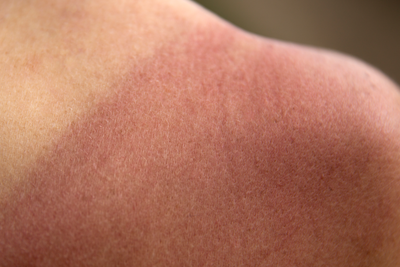
I never really paid attention to the early signs of sun damage on my skin. But after learning about the risks of skin cancer and premature aging, I started to notice small changes in my skin's appearance. Freckles, fine lines, and uneven skin tone were all indicators that my skin was suffering from the sun's harmful UV rays. I realized I needed to take better care of my face in summer to prevent long-term damage and maintain a youthful complexion.
My skincare routine needed a serious upgrade to combat the effects of sun exposure. I incorporated products containing vitamin C and glycolic acid to brighten my skin tone and promote cell turnover, making my skin look healthier and more radiant. To further protect my skin, I also started to wear makeup with SPF, ensuring I had an additional layer of defense against the sun's rays.
Preventing Premature Aging and Sun Spots
One of my biggest concerns was the effect of sun exposure on my skin's aging process. I knew that excessive sun exposure could lead to wrinkles, sagging skin, and age spots, but I wasn't sure how to prevent it. A visit to my board-certified dermatologist helped me understand the importance of a summer skincare routine tailored to my skin type, which included using antioxidant-rich products like vitamin C serums and green tea extracts to neutralize free radicals and protect my skin from environmental stressors.
My skincare regimen also included regular exfoliation to remove excess oil and dead skin cells, revealing a smoother and more even complexion. I learned that using a gentle, hydrating cleanser was essential for maintaining my skin's moisture balance, especially in the hot summer months when air conditioning can cause dry skin. By following a consistent summer skin care routine, I was able to prevent premature aging and sun spots, keeping my skin looking youthful and healthy.
Choosing the Right Sunscreen for Your Face
What to Look for in a Sunscreen
Finding the perfect sunscreen for my face was a daunting task, especially with so many options available on the market. I knew I needed a broad-spectrum SPF that would protect against both UVA and UVB rays, but I also wanted a formula that wouldn't clog my pores or cause acne breakouts. My board-certified dermatologist advised me to look for sunscreens with zinc oxide, which provide a physical barrier against the sun's rays and are less likely to irritate acne-prone skin.
Another important consideration was finding a sunscreen that suited my skin type. As someone with oily skin, I opted for a lightweight, oil-free formula that wouldn't exacerbate my existing skin issues. I also learned that using a tinted moisturizer with SPF could provide additional coverage and help even out my skin tone while still protecting my skin from the sun's harmful rays.
Understanding SPF Ratings and Broad-Spectrum Protection
I used to think that a higher SPF meant better protection, but I learned that wasn't necessarily the case. My board-certified dermatologist explained that SPF ratings indicate the level of protection against UVB rays, but not UVA rays, which are responsible for premature aging. To ensure my skin was protected from both types of rays, I needed a broad-spectrum SPF product.
Additionally, I discovered that using a sunscreen with at least SPF 30 was sufficient for most skin types, and applying enough sunscreen was more important than choosing a higher SPF. It was crucial to reapply sunscreen every two hours or after swimming or sweating to maintain adequate protection throughout the day.
Application Tips for Maximum Coverage
Applying sunscreen correctly is just as important as choosing the right product. I learned that it's essential to apply a generous amount of sunscreen to all exposed skin, including easily forgotten areas like the ears, neck, and hairline. My board-certified dermatologist recommended applying sunscreen 15 minutes before sun exposure to allow it to absorb properly and provide the best protection.
For those days when I wear makeup, I found that using a setting spray with SPF can provide an extra layer of protection and make it easier to reapply sunscreen without disturbing my makeup. And let's not forget the lips – using a lip balm with SPF can help keep them soft and protected from the sun's rays as well.
Adopting a Daily Summer Skincare Routine
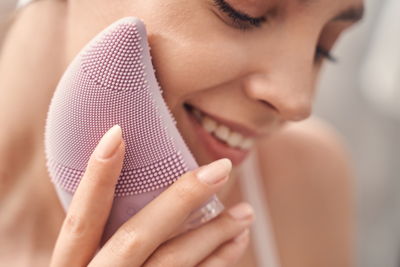
Importance of Cleansing and Exfoliation
Developing a consistent summer skincare routine was crucial in keeping my skin healthy and radiant. I learned that cleansing and exfoliation were key components of my regimen, helping to remove excess oil, dirt, and dead skin cells that can clog pores and lead to acne breakouts. By using a gentle cleanser designed for my skin type, I was able to maintain my skin's natural moisture balance and prevent dryness caused by air conditioning and sun exposure.
Exfoliating my skin twice a week with a product containing glycolic acid helped promote cell turnover and reveal a smoother, more even complexion. My board-certified dermatologist also recommended incorporating an anti-inflammatory ingredient like green tea into my skincare routine to soothe and calm any irritation from sun exposure or acne breakouts.
Keeping Your Skin Hydrated and Moisturized
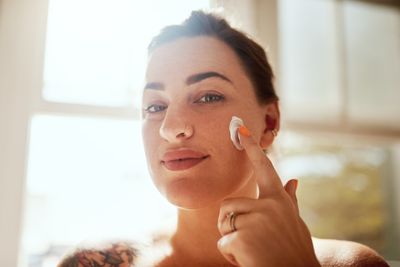
Hydration is essential for maintaining healthy skin, especially during the summer months when the sun and heat can cause dryness and dehydration. I discovered that using a lightweight moisturizer formulated for my skin type helped to keep my skin hydrated without causing excess oil production or clogged pores. Drinking plenty of water throughout the day also played a crucial role in maintaining my skin's moisture levels from within.
For an added boost of hydration, I started incorporating products containing hyaluronic acid and vitamin C into my skincare routine. These ingredients not only helped to lock in moisture but also brightened my skin tone and improved its overall appearance. By prioritizing hydration, I was able to maintain healthy, glowing skin all summer long.
Boosting Your Skin's Natural Defense with Antioxidants
I learned that incorporating antioxidants into my summer skincare routine was essential for protecting my skin from the damaging effects of free radicals caused by sun exposure. Antioxidants like vitamin C and green tea not only neutralize these harmful molecules but also boost my skin's natural defense against environmental stressors. By using a vitamin C serum daily, I noticed a significant improvement in my skin's brightness and overall texture.
Additionally, my board-certified dermatologist recommended including other antioxidant-rich ingredients like niacinamide and resveratrol to further enhance my skin's resilience against sun damage. These powerful antioxidants helped to repair existing sun damage, prevent premature aging, and promote healthy-looking skin throughout the summer months.
Staying Protected While Enjoying the Outdoors
Knowing When to Seek Shade
As much as I love basking in the sun, I learned that it's important to seek shade during peak sun hours when the sun's rays are the strongest. This usually occurs between 10 a.m. and 4 p.m., when the risk of sunburn and skin damage is the highest. By planning outdoor activities during the early morning or late afternoon, I was able to minimize my exposure to harmful UV rays and keep my skin protected.
When shade isn't readily available, I made sure to use other sun protection measures like wearing a wide-brimmed hat, sunglasses, and sun protective clothing to shield my skin from the sun's rays. These extra precautions helped me enjoy the outdoors without compromising my skin's health and well-being.
Appropriate Protective Clothing and Accessories
Wearing the right clothing and accessories played a significant role in keeping my skin safe from sun damage. I discovered that investing in sun protective clothing made from tightly woven fabrics with a high UPF (Ultraviolet Protection Factor) rating provided excellent protection against harmful UV rays. My board-certified dermatologist also recommended choosing clothing in darker colors, as they tend to absorb more UV radiation than lighter colors.
Accessories like wide-brimmed hats and sunglasses with UV protection were also crucial for shielding my face and eyes from the sun. By making these simple changes to my wardrobe, I was able to enjoy the outdoors with confidence, knowing my skin was well-protected from sun damage.
Staying Hydrated and Nourished from Within
I quickly realized that taking care of my skin in the summer wasn't just about the products I applied externally, but also about maintaining proper hydration and nourishment from within. Drinking plenty of water throughout the day was crucial for keeping my skin hydrated and healthy, especially during hot summer days. I also made an effort to consume a balanced diet rich in fruits, vegetables, and antioxidant-rich foods to provide my skin with the nutrients it needed to stay strong and resilient against sun damage.
By focusing on both internal and external factors, I was able to create a comprehensive summer skincare plan that not only protected my skin from the sun's harsh rays but also promoted overall skin health and radiance.
Repairing and Rejuvenating Your Skin After Sun Exposure
Soothing Sunburned Skin
Despite my best efforts to protect my skin from the sun, there were times when I inevitably experienced sunburn. I learned that treating sunburn as soon as possible was crucial to minimize skin damage and promote faster healing. My board-certified dermatologist recommended using soothing and cooling ingredients like aloe vera, which not only helped to alleviate the pain and redness but also provided much-needed hydration to my sunburned skin.
Applying a gentle moisturizer with anti-inflammatory properties, such as one containing green tea or chamomile, also proved effective in reducing redness and discomfort. I discovered that it was important to avoid using harsh exfoliants or acne treatments on sunburned skin, as they could further irritate and damage the skin's delicate barrier. By treating sunburn promptly and gently, I was able to minimize its impact on my skin's health and appearance.
Addressing Sun-Induced Hyperpigmentation
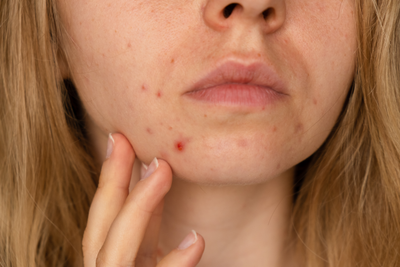
After prolonged sun exposure, I noticed some areas of my skin becoming darker or developing uneven pigmentation. My board-certified dermatologist explained that this was due to an increase in melanin production as a result of sun exposure, leading to age spots and other forms of hyperpigmentation. To address this concern, I incorporated brightening ingredients like vitamin C and glycolic acid into my skincare routine, which helped to fade dark spots and improve my skin tone over time.
Regular exfoliation with a gentle product containing alpha hydroxy acids also promoted cell turnover and helped to gradually even out my skin tone. By being consistent with my targeted skincare regimen, I was able to effectively reduce sun-induced hyperpigmentation and maintain a more uniform complexion throughout the summer months.
Reviving Your Skin's Natural Glow
After spending time in the sun, I often found my skin looking dull and lackluster. I discovered that incorporating a few key ingredients into my skincare routine could help restore my skin's natural radiance and promote a healthy, glowing complexion. Antioxidants like vitamin C and green tea were instrumental in brightening my skin, while hydrating ingredients like hyaluronic acid and glycerin helped to plump and smooth the skin's surface.
Additionally, using a lightweight facial oil containing nourishing and reparative ingredients like rosehip oil or argan oil helped to seal in moisture and support my skin's natural barrier function. By maintaining a consistent summer skincare routine that focused on hydration, exfoliation, and targeted treatments, I was able to revive my skin's natural glow and keep it looking healthy and radiant all season long.
Embrace a Sun-Safe Summer

By understanding the effects of sun exposure on my face, choosing the right sunscreen, adopting a daily summer skincare routine, and taking the necessary precautions while enjoying the outdoors, I was able to keep my skin healthy and radiant throughout the summer months. In addition to protecting my skin from the sun's harmful rays, I learned how to repair and rejuvenate my skin after sun exposure, addressing concerns such as sunburn, hyperpigmentation, and loss of radiance. Armed with this knowledge and a tailored skincare regimen, I can now confidently embrace a sun-safe summer, knowing that my skin is well-protected and nourished from the inside out.

